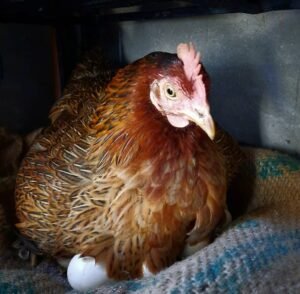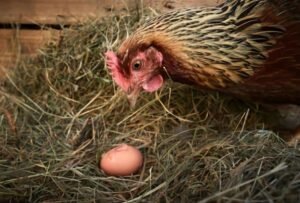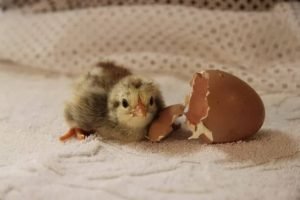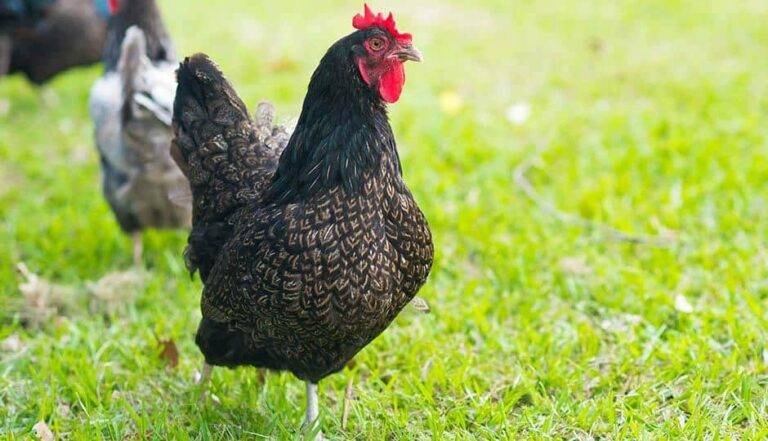Leghorn Chicken – Characteristics, Origin, Breed Info and Lifespan

If you desire to get a chicken breed that will lay multiple eggs for you in your poultry farm, then get the leghorn chicken.
In this article, I will explain why leghorn chickens are a good breed for egg production.
You will find full information about the leghorn chicken including its characteristics, lifespan and egg production capacity.
Also, you will find the history of this chicken breed in this article as well as the pros and cons of having one.
Without further ado, let’s get into details.
What is a Leghorn chicken?
The Leghorn is a chicken breed that originated from Tuscany, in central Italy.
Basically, they are an egg-laying breed of chicken known for its prowess around the world.
Although there are over 24 varieties of Leghorn chicken breed, the most common are the White and Pearl-white breed.
Others are less common.
What is the origin and history of Leghorn chickens?
Generally, we cannot trace this chicken breed to any particular crossbreed.
Reason being that its origin is not clear.
However, little traces were made towards the light chicken breeds of rural Tuscany.
Formerly, they were known as “Italians” in the early 1800s.
However, in 1865, the birds were called the “Leghorns” in Worcester, Massachusetts.
This was derived from the Tuscan port: the traditional anglicisation of Livorno called Leghorn.
This was in relation to the very first Leghorn chicken export in 1828.
Due to its prowess in the other countries, further exports were made in 1830 and 1852.
In 1870, the Leghorn chicken breed was exported to the United States. From there, they were re-exported to Italy.
You can say, the Leghorns were gaining relevance.
Following this breakthrough, Britains commenced import of the White Leghorns that came 1st place in a New York Show.
After this, the brown leghorns came to Britain in 1872.
However, a distinct problem was associated with the Leghorn chicken.
They were lightweight.
Most Britains farmers sought ways to increase the weight to something above 1.6kg.
It happened that a crossbreed with Minorca and Malay stock did the trick.
The recent Leghorn chicken breed after the crossbreed had more weight than their ancestors.
In the 1880s, the first Pyle Leghorn chicken breed was bred in Britain.
From there, the gold and silver duck wings were invented.
This was as a result of a cross between the Leghorns and a Phoenix or Japanese Yokohama birds.
In 1885, the Buff Leghorns were first seen in Denmark and in England in 1888.

What are the characteristics of Leghorn chickens?
1. The Leghorn chickens weigh between 2kg and 3.4kg:
The weight of a Leghorn chicken usually is determined by the standard.
And also it kinda depends on how old the chicken is.
Usually, the Italian standard weighs thus
- Roosters: 2.4–2.7 kg (5.3–6.0 lbs)
- Hens: 2.0–2.3 kg (4.4–5.1 lbs)
But for the British standard, the weight is heavier.
- Rooters: 3.4 kg (7.5 lb)
- Hens: 2.5 kg
- Young roosters: 2.7–2.95 kg
- Pullets 2–2.25 kg
2. Leghorns have comb varieties:
You can either see a Leghorn with a rose or a single comb.
But in some countries, the rose combed leghorn is not permitted.
For instance, Italy does not permit the rose-combed Leghorn.
The rose combs were bred in the United States to deal with the harsh winters.
On the other hand, the large single combs were no match for the harsh winters of the northern states.
3. Usually, the Leghorns are Egg-ceptional Birds:
Primarily, the Leghorns are reared for eggs.
They are good egg layers. Clocking about 200 eggs in a year.
Although they are good egg layers, they cannot be compared to the Cochin Chickens.
4. The legs are bright yellow, and the ear-lobes white:
Usually, may think there’s something about the legs of a Leghorn that is attributed to its name.
But the odds are clear.
The name is simply associated with the Tuscan port.
Talking about the legs of a Leghorn, they are yellow in colour.
Usually, they have four toes.
And they rarely get dirty. Even after foraging.
5. The Leghorns are chickens that have the largest varieties:
Different countries have different variations of the Leghorn chicken.
The Fédération française des volailles (the French poultry federation) recognizes 4 leghorn chicken breed.
And the autosexing variety: the Cream Legbar.
Also, these four breeds have 17 colour variations. They include;
- American white
- English white
- Old type (golden-salmon)
- Modern type.
On the other hand, the American Poultry Association and the American Bantam Association recognizes totally different breeds.
These include the
- Black
- Buff
- White
- Red
- Barred
- Silver
- Black-tailed red
- Light brown
- Dark brown
- Columbian
- Buff Columbian

However, Britain Leghorn Club recognizes 18 Leghorn chicken colours.
These include the;
- Brown
- Buff
- Exchequer
- Columbian
- Pyle
- White
- Black
- Blue
- Mottled
- Cuckoo
- Blue-red
- Lavender
- Red
- Crele
- Partridge
- Golden duck wing
- Silver duck wing
- Buff Columbian
6. Leghorn chicken breed are good foragers:
While they love walking about, they glean for food in the process.
And seems like they love the forages better than feed.
Usually, they glean much of their diet from ranging over fields, backyards and barnyards.
You might find it across the fence searching for food.
7. Leghorns are highly-spirited and stylish birds:
Being highly spirited comes with a lot of chuckling.
And chucklings can be very noisy.
Aside from the noise, they are very active.
Always looking out for the next adventure.
And this they do with great style.
8. The Leghorns are quite petite:
Let’s say they are not really large birds by nature.
They have a smallish body.
Even after the crossbreed with Mornica Chickens.
Its petite nature makes it unsuitable as table fare.
But what they lack in size, they compensate in weight.
Despite this, the Leghorn remains a thin bird, not really suitable as table fare at all.
8. Leghorns are capable of considerable flight
Well, this can be a lot of problems.
Their petite nature makes them light. And this gives them wings to fly.
If given the opportunity, they will roost in trees.
So, just maybe, you will always go to look for Foghorn Leghorn in the next yard.
Just like in the cartoon.
9. Leghorn chickens have motley colours:
One huge characteristic of the Leghorns is that they do not have unique facial and body colours.
Usually, their legs are yellow, wattles; red and earlobes; white in colour.
Their eyes are orange/red, beak; yellow-coloured.
10. They rarely go broody:
You trying to make a good mother out of a Leghorn chicken is a herculean task.
Or let’s just say, it’s not possible.
These chickens are layers, not brooders.
Because they do not set well, they do not make good mothers.
If you want chicks, Leghorns are a bad choice.
11. Leghorns are hardy and healthy birds:
They do not have the usual chicken illness.
But you show need to touch up their combs in winter.
This is so because winter makes their comb large and floppy.
In that regard, you need a jar of Vaseline to prevent frostbitten combs and wattles.
To avoid this, get rose comb varieties.
Table summarizing the Leghorn breed information
| Skin colour | Yellow |
| Egg colour | White |
| Comb type | Single or Rose |
| Setter/Broody | No |
| Especially Docile | No |
| Use | Egg Production |
| Cold Hardiness | Hardy in winter |
| Conservation status | Not at risk (FAO 2007) |
| Heat Tolerance | Tolerates heat well. |
| Also Known As | LivornoLivornese |
| Personality | Active and intelligent |
| Country of origin | Italy |
| Standard | Livorno BreedItalianBritish |
| Bears Confinement | Bears confinement well |
| Weight | Italian standard: Roosters: 2.4–2.7 kg (5.3–6.0 lb) Hens: 2.0–2.3 kg (4.4–5.1 lb) British standard: Roosters: 3.4 kg (7.5 lb) Hens: 2.5 kg |
| Varieties | White, red, black-tailed red, light brown, dark brown, black, buff, Columbian, buff Columbian, barred, and silver. |
Why choose Leghorn chickens?
If you’re wondering why the Leghorns are the best fit for your farm, then this section will enlighten you.
Usually, every farmer wants the best out of their flock.
Now, here’s why Leghorn chickens are good for the pick;
1. They are good egg layers:
You can count on 4-5 eggs in a week.
Usually, this rounds about 250-320 eggs in a year.
The older they get, the more eggs they lay.
And the bigger the eggs become.
Therefore, if it’s the eggs you want, the leghorn chicken breed is a great choice.
2. They are good foragers:
Just in case you don’t have enough feed for the whole flocks, the Leghorn chicken breed wouldn’t be affected.
You can count on them to find food out there.
What this means is that you need to afford them more space to forage.
3. Leghorn chickens are hardy birds:
Their active nature makes them immune to so many chicken diseases.
Therefore, regular trips to the medicine store or outbreaks of diseases would not be heard rearing Leghorn chicken breeds.

What are the disadvantages of having the Leghorn Chickens?
Although they are good layers and smart birds, making a choice based on this will lead to tears.
How?
The Leghorn chicken has some not so good attribute that makes them a scare to farmers.
Below, you will find out some.
1. Leghorns are noisemakers:
If you’re living the urban life and what a bit of rurality by having poultry.
Adding Leghorn chickens will send you packing out of town.
The Leghorn chicken breed is loud chuckling birds.
Not suitable for urban life.
2. Leghorn chickens are high flyers:
You might find them flying into the neighbour’s yard on a regular.
And sometimes they will make a nest on the nearby tree.
3. Leghorns are aggressive birds:
They can go all scratchy inflicting injuries on both other chickens and humans.
4. They are small in size:
The smallish body nature of Leghorn chickens makes them less attractive.
If you want chickens for meat, then this wouldn’t be your great option.
Frequently Asked Questions About Leghorn chickens
1. What is the lifespan of Leghorn chickens?
Due to their hardy and healthy nature, most live up to 10 years.
On an average scale, most Leghorns live up to 8+ years.
2. Are Leghorn chickens good for meat?
Although they can be eaten, they do not make good meat.
Their petite nature makes it less fleshy.
If getting meat is your intention, then a Plymouth Rock or Australorps.
3. Can Leghorn chickens be trained as pets?
Without mincing words, the Leghorns are not ideal for pets.
They could go all scratchy and inflict injuries on humans.
It’s natural for them. Because they’re great scavengers.
I’m sure you wouldn’t want that.
4. Are Leghorn chickens good egg layers?
On a general note, they’re good egg layers.
They are good layers of white eggs. The eggs weigh at least 55g.
But certain varieties of Leghorn chickens lay more than others.
The White lay very large eggs. Almost every day.
But we cannot say the same for the other varieties.
In other words, the other varieties aren’t nearly so prolific.
Due to their prolific egg-laying capability, most laboratories use them for embryonic and avian biological research.
5. How often do Leghorn chickens lay eggs?
Leghorn chickens lay eggs almost every day. Especially the White.
Usually, they lay about 280 eggs in a year.
And sometimes, they can reach 300–320.
If you want more eggs from the Leghorn breed, use the White.
White Leghorns have been used to create highly productive egg-laying hybrids for commercial and industrial operations.
6. What do Leghorn chickens eat to grow big?
The normal layer feed is enough to keep them robust.
But no matter what they feed on, the petite nature wouldn’t let them grow any bigger than normal.
7. How fast do Leghorn chickens grow?
Naturally, the Leghorns grow very fast.
Once they hatch, they feather up fairly quickly.
And in a matter of weeks, they’ve matured.
8. Are Leghorn chickens noisy?
Yes, they are.
Both the roosters and hens are loud chickens.
9. What is the habitat, and environment of Leghorn chickens?
A free-range system is enough to keep the leghorn chicken in good shape.
Due to their high flying ability, a cover or semi free-range system will be good.
This probably keeps them away from trees and the neighbor’s backyard.
For the ring size, 18 mm is okay for the roosters.
And 16 mm for hens.
Conclusion
Majorly, the Leghorn chicken is a beautifully proportioned bird, sleek and well designed.
It’s best for egg production.
And not advisable for pets.
We hope this piece was enlightening.
If this description fits the bird you can handle, then go buy some leghorn chickens
References
- 12 Best Chicken breeds for Eggs – chicken breeds for eggs
- When Do Chickens Start Laying Eggs Regularly?
- How Many Eggs Does A Chicken Lay In A Week?
- Fermenting chicken feed – The definitive guide
- 10 Sure Ways To Stop Chickens from Eating Their Eggs [+Bonus]
- 6 Best Chicken Egg Incubators for Chicken Eggs and Other Birds











